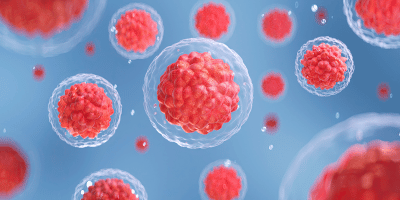How Long Do Stem Cells Take To Work
Introduction to Stem Cell
Stem cell regeneration is the latest advancement in regenerative medicine and it has captured attention due to its potential to treat multiple conditions and promote healing. This blog mainly answers the question of the patients and researchers “How long does it take for stem cells to work”? We will study the different aspects of stem cell treatments, including their timeline for visible results and the factors that influence the effectiveness and frequently asked questions.
What is Stem Cell Therapy?
Stem cell therapy involves the use of stem cells to repair or replace the damaged tissues and cells within the body. These cells have the unique ability they differentiate into multiple cell types which makes them perfect for use in regenerative medicine. Stem cell treatment is utilized in multiple medical fields including orthopedics, neurology, cardiology, and oncology to solve issues including joint pain and arthritis to more severe conditions like spinal cord injuries and heart disease.
Types of Stem Cells Used in Therapy
The multiple types of the stem cells that are used in the treatments are given below:
Embryonic Stem Cells (ESCs):
These are derived from the embryos and can differentiate into any cell type.
Adult Stem Cells:
These are found in the tissues like bone marrow and are specialized.
Induced Pluripotent Stem Cells (iPSCs):
These are the adult cells that are reprogrammed to behave like embryonic stem cells.
Mesenchymal Stem Cells (MSCs):
These are commonly used in orthopedic treatments due to their ability to differentiate into bone, cartilage, and fat cells.
How Long Does It Take for Stem Cells to Work?
One of the most commonly asked questions regarding stem cell therapy is “How long does it take for stem cells to work?” The answer to this simple question depends on different factors that include the patient’s overall health, the type of stem cell used, the conditions that are being treated, and the specific cell treatment procedure.
Factors Influencing the Timeline
Type of Stem Cell Used:
Different stem cells have different healing times. For example, the mesenchymal stem cells (MSCs) used in orthopedic treatments might show results faster than the hematopoietic stem cells that are used in bone marrow transplants.
Condition Being Treated:
Acute injuries like ligament tears might respond more quickly to stem cell therapy than chronic conditions like osteoarthritis.
Patient’s Health and Age:
Younger and healthier patients may experience quicker recovery times and more effective results.
Procedure Type:
The method of stem cell delivery can affect how fast the cells begin to work like direct injections vs intravenous injections.
General Timeline for Stem Cell Therapy
Individual experiences may indeed vary but the generic timeline of the stem cell therapy results is:
Immediate Response:
Some patients can notice mild pain relief and reduced inflammation in the few days or weeks after the treatment. This is mainly due to the anti-inflammatory properties of the stem cells.
Four to Six Weeks:
Most patients report major improvements in their conditions within four to six weeks. And during this period the stem cells begin to differentiate and repair the damaged tissues.
Three to Six Months:
It may take three to six months for more substantial and long-lasting results. This is the time when the regenerative effects of the stem cells become more evident and there is continued improvement in pain relief, function, and tissue repair.
Long-Term Benefits:
Some patients experience ongoing improvements up to a year or more after the initial treatment, especially in cases where the stem cells continue to promote healing and regeneration.
How Long Does Stem Cell Therapy Take to Show Effects?
Mostly people ask “How long for stem cells to work?” In general, the patients can expect to see some improvement in a few weeks and more accurate results are seen in the several months. It’s important to know that some patients see rapid improvements while others might see gradual progress. To monitor the progress, regular follow-ups with the healthcare provider are essential so that adjustments can be made to the treatment plan.
Effects of Stem Cell Therapy
Immediate and Short-Term Effects
Reduced Inflammation:
One of the major and first noticeable effects is the reduction in inflammation in the treatment area.
Pain Relief:
Many patients have reported pain relief within the days to weeks after the treatment.
Long-Term Effects
Tissue Regeneration:
Stem cells play an important role in regenerating and repairing damaged tissues and it takes some time but ultimately the function and mobility are improved.
Sustained Pain Relief:
Long-term pain relief is considered as the major relief mainly for chronic conditions like joint pain and arthritis.
Ongoing Research and Clinical Trials
Stem cell therapy is an evolving field and the research is continued as well as the clinical trials. The clinical trials have helped a lot to deepen our understanding of how can we maximize the benefits. It’s better to stay informed about the latest advancements as it can help patients make better-educated decisions about their treatment options. The exact timeline of the stem cell therapy results can indeed vary but many patients see major improvements in their conditions within a few weeks to months. Patients can set expectations and make informed decisions about their healthcare journey by understanding the factors that influence the effectiveness of stem cell treatments.
Conclusion
Stem cell therapy holds a bright future for multiple medical conditions and they offer effective treatment options. The results can vary depending on the stem cell treatments and patients can see the major improvements within a few weeks to months. The time for the stem cells to work depends on factors such as type of the stem cells used, the conditions that are being treated, and the patient’s health.
Frequently Asked Questions
- What time does it take for the injection to work on stem cells?
Stem cell injections show effects in a few weeks and the improvement is over several months. The exact time may vary based on the individual factors and the conditions that are being treated.
- How do orthopedic conditions take time to repair by the stem cells?
Patients can see improvements in four to six weeks for orthopedic conditions like joint pain and tendon injuries and the maximum benefits can appear from three to six months.
- Does stem cell therapy give immediate results?
There are some immediate reliefs related to anti-inflammatory effects but the tissue repair and regeneration can take usually weeks to months.
- How long does it take stem cells to work to see results from stem cell treatments for chronic conditions?
Chronic conditions may require more time to see the results. Patients who are diagnosed with chronic ailments might observe the improvements in three to six months and the benefits up to a year or more.
- Are there any factors that can influence the effectiveness of stem cell therapy?
Yes, the factors that can influence the effectiveness and timeline of stem cell therapy are the type of stem cell used, the patient’s overall health, age, and the specific conditions being treated.



